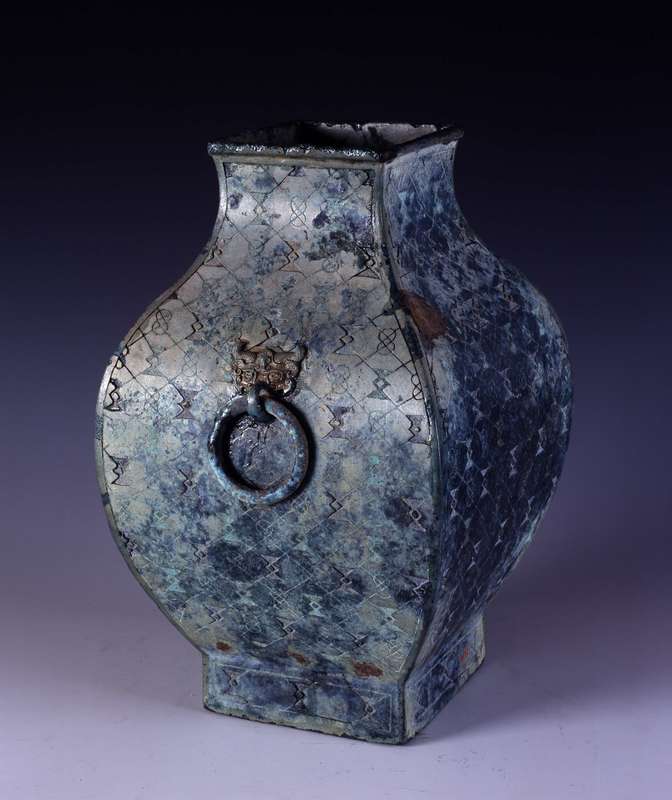Bronze Pot Inlaid with Turquoises

Warring States (475—221BC)
Height: 27cm; Diameter at Mouth: 8.9cm
Unearthed from Lvnan Village, Xiangxiang City, Hunan Province in 1965
The Square Bronze Pot Inlaid with Turquoises, in the color of pale green, is a wine-vessel with square-shaped mouth, straight neck, ring foot, flared belly, two animal-head-appliqué holding rings which are symmetrically arranged on the two shoulders, oblique graticule patterns on the surface and turquoises inlaid at crosspoints of any two oblique lines. Most of the turquoises have fallen off. This bronze pot, so well preserved and exquisitely decorated, is rarely seen among bronzes of that time.
深入探索
On Turquoise
Turquoise is a semiprecious stone, typically opaque and of a greenish-blue or sky-blue color. Ancient people, both at home and in Muslim countries, were fond of turquoise because they believed that this stone would bring good luck.
In China, turquoise is Tibetan people’s favorite stone. They decorated the Buddhist statues in Johkang Temple of Lhasa with turquoise and even wear them as jewelries in their daily life.
However, in ancient China, common people had no right to possess turquoises that were exclusively owned by noble class, which can be proved by the fact that most of objects (such as jade, lacquerware, bronzes, etc.) decorated with turquoises were unearthed from tombs of nobles and royals.

Goddess Head Sculpture with Turquoises as Eyes



